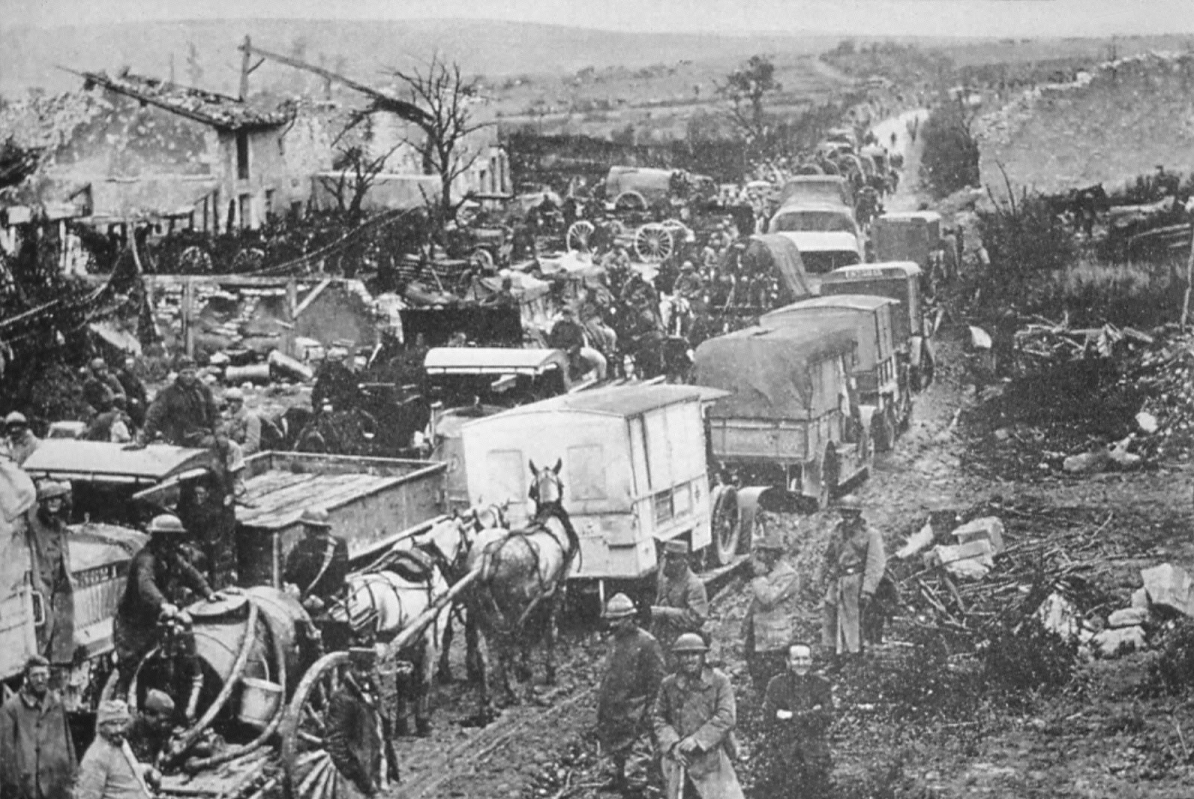



.jpg) 60-pounder Howitzer
60-pounder HowitzerThe 60-pounder Howitzer was a medium class 5 inch howitzer designed by the British in 1904. This weapon was a mainstay of British and Empire medium artillery during the First World War, being operated by batteries of the Royal Garrison Artillery (in the Canadian Expeditionary Force, units equipped with the 60-pounder were termed "Heavy" Artillery Batteries).

British 60-pounder photographed during the First World War. IWM Photo.
Role
While the need for a howitzer was obvious during the First World War, the need for a lighter gun capable of firing similar shells to greater ranges was also apparent.
- Heavy artillery did this, of course, but what was wanted was a gun under command of the division, given the particular task of delivering counter-bombardment fire on to enemy gun batteries. The idea had actually occurred before the war broke out, although the counter-battery task had not been widely appreciated, and in 1904 the 60-pdr gun was introduced. This was a cumbersome weapon with box trail and traction-engine wheels, and in order to distribute the load behind the horse team, it was designed so that the gun could be uncoupled from the recoil system and pulled back across the trail before moving off. The trail end was supported by a two-wheeled limber, so that the equipment became a four-wheeled load of just over four tons. By 1914, 41 of these had been made and issued (to the British Army.)1
Heavy artillery before the war was distinct from siege artillery in that it was "immobile, being stationed to guard fortresses or static strongpoints." During the war, this distinction lessened, and heavy artillery units, given the static warfare of the Western Front, "was mainly used to neutralize hostile (artillery) batteries and to harass the enemy on roads and lines of approach beyond the range of field and siege artillery..."2
Characteristics
British 60-pounder during the First World War. IWM Photo.
The howitzer could fire a 60 lb shell 10,300 yards (6.0 miles). The 60-pounder required a team of 12 horses to move it. A simplified design adopted as an interim measure on the outbreak of war reworked the design to make it easier to manufacture. The running-back feature was deleted and other simplifications actually increased the weight of the gun by a ton. The increased weight was not spread over the wheels, and the use of horses was abandoned in favour of a Holt tracked tractor.
This interim design was superceded by the Mark II gun and Mark IV carriage, introduced in 1918. With a recoil system relocated to a cradle under the barrel (rather than spread around the barrel in multiple cylinders as before), the running-back idea was simplified and revived, an improved breach was added, and the barrel lengthened to improve performance.
The 60-pounder remained in use by the British Army until 1944, though its last combat action was in the Western Desert in 1941.
The Canadian Army received new 60-pounders after the First World War from Britain (Canada had left much worn out artillery behind in Europe at the conclusion of the war). The Deputy Inspector General of Artillery, Major General Morrison, noted in Feb 1921 that the reorganization of Canadian artillery, outlined in 1920 along with other sweeping reforms of the Militia, was nearly complete and that other reforms authorized after had also been undertaken.
As Britain's artillery was organized into Royal Horse Artillery (with 13-pounder Quick Firing Guns, Royal Field Artillery (equipped with 18-pounder Guns and 4.5-inch Howitzers, and six categories of Royal Garrison Artillery (including Pack Artillery, Medium Artillery, Heavy Artillery, Super Heavy Artillery, Coast Artillery and Anti-Aircraft Artillery), and because Canadian gunners trained with British manuals, the temptation to adopt British nomenclature and organization was strong. The 60-pounder remained in use in Canadian Medium Regiments until the Second World War. In Britain, it began to be phased out in the late 1930s by a 5.5-inch Howitzer firing a 100-lb shell, as well as the smaller 4.5-inch Howitzer.
- Calibre: 127mm
- Shell weight: 60 lbs
- Muzzle velocity: 2,080 fps (Mk I)/2,130 fps (Mk II)
- Maximum range: 12,300 yds (Mk I)/15,000 yds (Mk II)
- Weight in action: 9,856 lbs (Mk I)/12,048 lbs (Mk II)
- Elevation: -5°/+21½° (Mk I)/ -4°/+35° (Mk II)
- Traverse: 4° left and right3

No comments:
Post a Comment